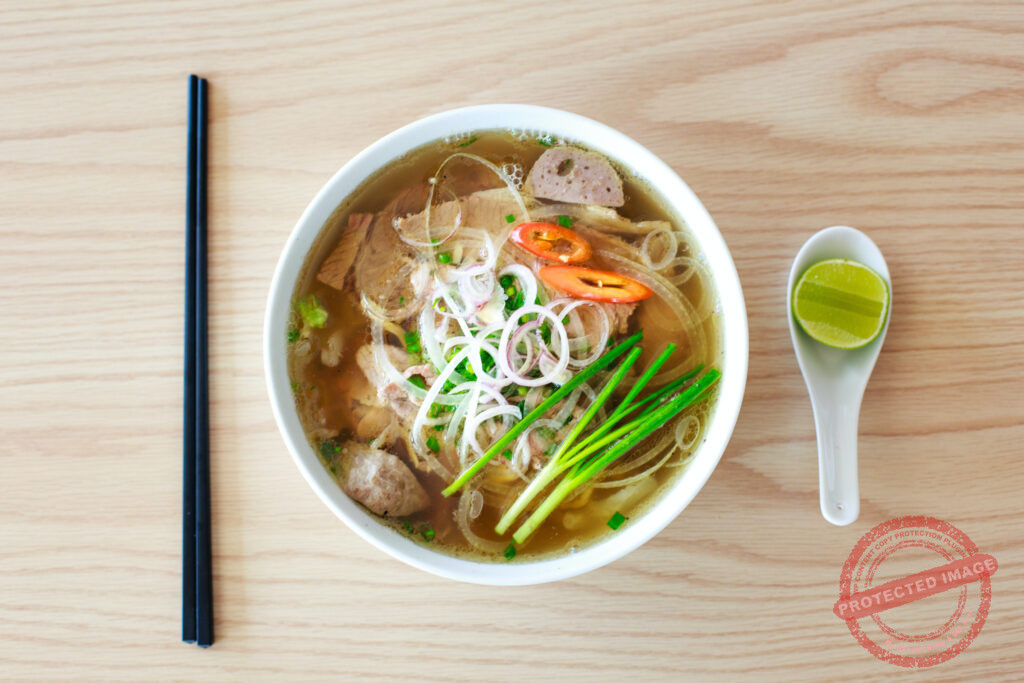
Cold and flu season is upon us. Good nutrition is one of the best weapons we have to defend against lurking viruses. Nutrition is integral to Traditional Chinese Medicine (TCM), a holistic approach to health and healing. In TCM, we view food as a medicine that can either promote or disrupt the body’s balance and overall health. Ultimately, TCM teaches you the best way to eat and foods to avoid colds. Here’s a brief explanation of how nutrition is a branch of TCM:
Balancing Yin and Yang
TCM is based on the concept of Yin and Yang, opposing forces that we must balance for good health. We classify different foods as Yin or Yang, and TCM practitioners recommend specific foods to rebalance an individual’s Yin and Yang energies based on their particular health condition.
Five Elements Theory
TCM also incorporates the Five Elements theory (wood, fire, earth, metal, and water) to classify foods and their effects on the body. Different foods are associated with other elements, and TCM practitioners use this knowledge to recommend foods that can support the balance of these elements within the body.
Individualized Dietary Recommendations
When making dietary recommendations, TCM considers each person’s unique constitution, health condition, and environmental factors. This personalized approach helps address specific health issues and maintain overall well-being.
Therapeutic Foods and Herbs
TCM often incorporates therapeutic foods and herbs into the diet to address specific health concerns. For example, we recommend ginger for its warming properties to alleviate cold symptoms or ginseng for its energy-boosting qualities.
Preventive Healthcare
TCM strongly emphasizes preventive healthcare and utilizes nutrition to maintain health and prevent imbalances and illnesses from occurring in the first place. Eating well is considered a fundamental aspect of TCM’s preventive approach.
Dietary Recommendations To Stay Healthy
Here are some dietary recommendations to help you stay healthy during cold and flu season:
Warming Foods
TCM suggests consuming warming foods to combat cold pathogens, including ginger, garlic, onions, and lamb. These ingredients help increase body heat and expel cold.
Herbal Teas
Herbal teas made from ingredients like ginger, cinnamon, and licorice root can be soothing and warming. They help alleviate symptoms if you catch a cold and boost your immune system to prevent illness.
Congee
Congee, a rice porridge, is a gentle and easily digestible food often recommended when you’re under the weather. For extra nourishment, you can add ingredients like ginger, garlic, scallions, and some protein (chicken or tofu).
Bone Broth
Rich in nutrients and minerals, bone broth is a staple in TCM for supporting the immune system. It nourishes the body’s Qi (vital energy) and strengthens the digestive system.
Mushrooms
Various mushrooms, such as shiitake and maitake, are known for their immune-boosting properties. Incorporate them into soups, stir-fries, or teas.
Vitamin C-Rich Fruits
Fruits like oranges, kiwis, and strawberries are high in vitamin C, essential for immune health. TCM encourages the consumption of fresh fruits to help balance the body’s energies.
Avoid Excessive Cold and Raw Foods
During cold and flu season, we recommend minimizing the consumption of raw and cold foods like salads and raw vegetables. These foods weaken the digestive system and make the body more susceptible to cold pathogens.
Stay Hydrated
Proper hydration is essential for overall health. Warm herbal teas and soups can help keep you hydrated while also providing nourishment.
Moderation
TCM advises against overeating, as it can weaken the digestive system. Eating in moderation and paying attention to portion sizes are essential for maintaining balance.
Recipes – Best Foods to Avoid Colds
Here are recipes for two of the best foods to avoid colds and flu.
Congee Recipe
Congee is a comforting and nourishing dish that can be particularly helpful during flu season as it’s easy on the stomach and provides essential nutrients. Here’s a basic congee recipe with ingredients that can help support your immune system:
Congee Ingredients
- 1 cup rice (white or brown)
- 6-8 cups water or chicken broth (for added flavor)
- 1-2 cloves garlic, minced
- 1-inch piece of ginger, minced
- 1-2 chicken breasts or thighs (optional for added protein)
- Salt and pepper to taste
- Toppings (choose a few):
- Sliced green onions
- Chopped cilantro
- Sliced mushrooms
- Sliced carrots
- Spinach or bok choy leaves
- A boiled or poached egg
- A splash of soy sauce or fish sauce (for extra flavor)
- Sesame oil (for drizzling)
Instructions for Preparing Congee
- Rinse the rice: Rinse the rice under cold water until the water runs clear to help remove excess starch.
- Cook the rice: In a large pot, combine the rinsed rice and water or chicken broth. Bring to a boil, then reduce the heat to low and simmer. Stir occasionally to prevent sticking.
- Add garlic and ginger: Once the rice starts to soften and break down (about 30 minutes), add the minced garlic and ginger. Continue simmering for another 15-20 minutes or until the congee reaches your desired consistency. You can add more water or broth if it becomes too thick.
- Optional: Add chicken: If you’re adding chicken, season it with salt and pepper, and poach it in the congee until fully cooked (about 20-30 minutes). Remove the chicken, shred it, and return it to the pot.
- Season and serve: Taste the congee and adjust the seasoning with salt, pepper, and a splash of soy sauce or fish sauce if desired. Serve the congee hot.
- Top and garnish: Ladle the congee into bowls and top with your choice of toppings. Sliced green onions, chopped cilantro, and a drizzle of sesame oil work particularly well for added flavor.
- Enjoy: Enjoy your homemade congee as a nourishing and soothing meal during flu season. It’s gentle on the stomach and provides hydration and nutrients that can help support your immune system.
Remember, you can customize your congee with various ingredients and toppings to suit your taste and dietary preferences. It’s a versatile dish, and you can experiment with different flavors and textures to keep it interesting and nutritious.
Bone Broth Recipe
Bone broth is known for its potential health benefits, especially during flu season, as it can help soothe a sore throat and provide essential nutrients. Here’s a basic bone broth recipe that you can use:
Bone Broth Ingredients
- 2-3 pounds of bones (chicken, beef, or a combination)
- 2 carrots, roughly chopped
- 2 celery stalks, roughly chopped
- 1 onion, roughly chopped
- 4 cloves garlic, smashed
- 2 bay leaves
- 1-2 tablespoons apple cider vinegar (helps extract minerals from the bones)
- 8-10 cups of water
- Salt and pepper to taste
- Optional: a handful of fresh parsley or other herbs
Instructions for Preparing Bone Broth
- Roast the bones (optional): Preheat your oven to 400°F (200°C). Place the bones on a baking sheet and roast them for about 30 minutes. Roasting the bones can enhance the broth’s flavor, but it’s optional.
- Prepare the vegetables: While the bones are roasting, chop the carrots, celery, onion, and garlic.
- Combine ingredients in a pot: In a large stockpot or slow cooker, add the roasted bones (if using), chopped vegetables, bay leaves, and apple cider vinegar.
- Cover with water: Pour in enough water to cover the bones and vegetables. Be sure not to overfill the pot.
- Simmer: Place the pot on the stove over low heat (or set your slow cooker to low), and bring the mixture to a gentle simmer. Do not let it boil vigorously; a low simmer is ideal. Skim off any foam that rises to the surface during the first hour of cooking.
- Simmer for a long time: Allow the broth to simmer for at least 8 hours, but longer is better. Some people simmer bone broth for up to 24 hours to extract maximum flavor and nutrients.
- Strain: Once the broth has simmered to your satisfaction, remove the bones and vegetables with a slotted spoon. Then, strain the liquid through a fine-mesh strainer or cheesecloth into a large bowl or pot.
- Cool: Allow the broth to cool to room temperature, then refrigerate it. As it chills, you may notice a layer of fat forming on the surface. You can skim this off if you prefer a leaner broth.
- Season and store: Before serving, reheat the broth and season it with salt and pepper to taste. You can also add fresh herbs like parsley for extra flavor. Store unused broth in the refrigerator for up to a week, or freeze it in small portions for more extended storage.
Enjoy your homemade bone broth as a comforting and nutritious drink or as a base for soups and stews. Bone broth can help keep you hydrated and provide essential nutrients that may support your immune system during flu season.
Next Steps
Nutrition is a branch of Chinese medicine that can help you find the best foods to avoid colds and flu this year. Acupuncture is another branch of Chinese medicine that boosts your immune system by building your defensive energy, called Wei Qi. Strong Wei Qi surrounds you in a hedge of protection from cold and flu viruses. You can be in a room full of sick people, but if your Wei Qi is strong, it is less likely that you will get sick.
BOOK NOW to schedule an appointment for acupuncture and nutrition counseling.
Meet the Practitioners (Video).
Learn about all the conditions we treat.
Focus Keyphrase: Best Foods To Avoid Colds
Photo by Quang Nguyen Vinh: https://www.pexels.com/photo/food-photography-of-ramen-noodle-2133989/

